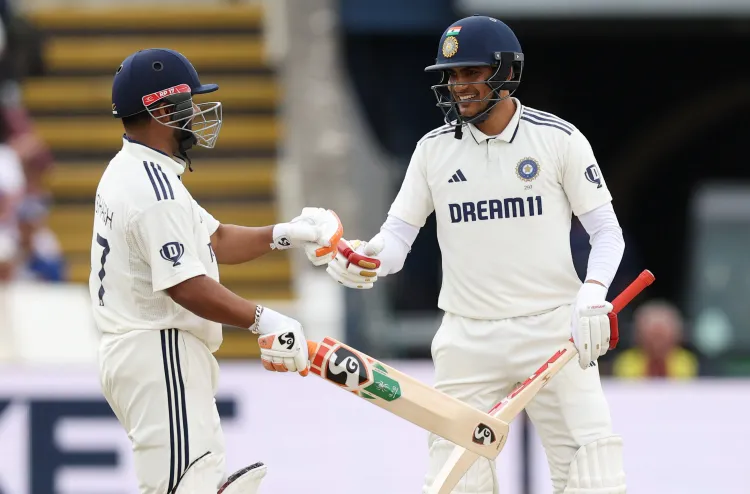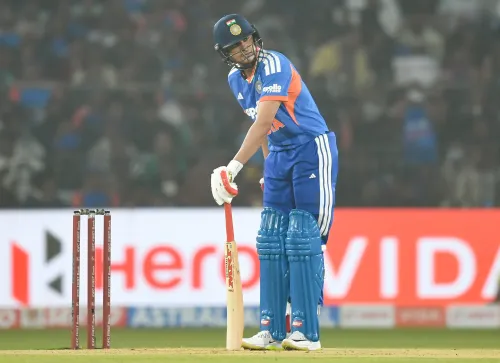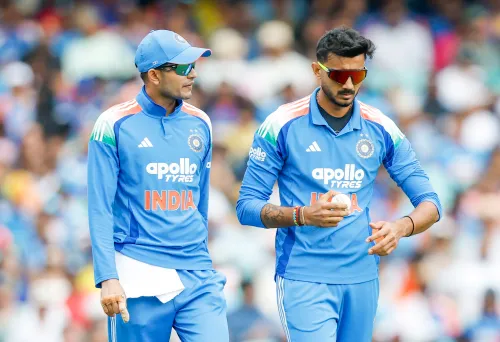How Do Gill and Pant Contribute to India's Success in the 3rd Test?

Synopsis
Key Takeaways
- Shubman Gill and Rishabh Pant are pivotal to India's batting lineup.
- Pant's aggressive style can shift match momentum.
- Lord's pitch may challenge batsmen.
- Time spent at the wicket is crucial for adapting.
- Technical and mental adjustments are key for player performance.
London, July 8 (NationPress) As the Indian team prepares for the third Test at Lord's, their batting coach Sitanshu Kotak has praised the contributions of their two key players: newly-appointed captain Shubman Gill and wicketkeeper-batter Rishabh Pant.
Both Gill and Pant have been instrumental in India's achievements in this series. Kotak highlighted Pant's risk-and-reward batting style, emphasizing the significance of having players capable of shifting momentum and altering the game's direction. Pant has not only scored centuries in both innings of the Leeds Test but also forged a critical partnership with Gill in the second Test, attacking the bowlers with great aggression.
“Every team will have aggressive players who excel at disrupting the opposition's rhythm. Players like Jaiswal, who plays his natural game, and Rishabh are vital to this,” stated Sitanshu.
“However, this doesn’t imply that he lacks thought. He is indeed reflective, making decisions, and when those decisions falter, it can be detrimental. Yet, when they succeed, spectators enjoy saying, 'What an entertaining innings that was.' A successful team often requires a few distinctive players in their batting lineup,” Kotak explained.
Kotak refuted the idea that Pant is merely an instinctive player, as seen in his daring shot choices.
“Rishabh engages in extensive discussions about his batting strategies with me. He prefers to remain quiet during his innings to avoid disrupting his mindset, which could lead to poor choices,” Kotak added.
Pant currently ranks as the third-highest run-scorer in the series with 342 runs that include two centuries, while Gill tops India's batting statistics. He commenced the series with his first century in England and as captain in the opening Test, followed by a double hundred and a 150 in the second innings at Edgbaston.
This resurgence in his batting prowess comes after a disappointing performance in the Border-Gavaskar Trophy series in Australia, where he managed only 93 runs across five innings.
“I don’t believe his captaincy has altered anything significantly. His mindset has evolved somewhat, and I have noticed certain technical adjustments during our time in Australia, the series in India, and our initial practice match here,” Kotak stressed.
“It’s more about a shift in mindset than merely technical aspects, which every player undergoes without fanfare.”
“His approach now involves allowing more time for the wicket. As I mentioned earlier, his skills enable him to convert any loose delivery into a boundary,” he added.
Kotak observed that the Lord's pitch, with its noticeable grass cover, is expected to favor bowlers, making batting more challenging than in the previous two Tests.
“The wicket appears greener compared to what we encountered in the last two matches. However, we can only provide a conclusive assessment after the final preparations before the match,” Kotak noted. “Typically, at Lord's, the scores in the first and second innings tend to be lower. So, it’s reasonable to anticipate favorable conditions for bowlers.
“For batters, spending time at the crease is invaluable. The longer one spends there, the better they can adapt,” he concluded.










